Technology
TheHRWP: Your Guide to Optimizing Human Resources
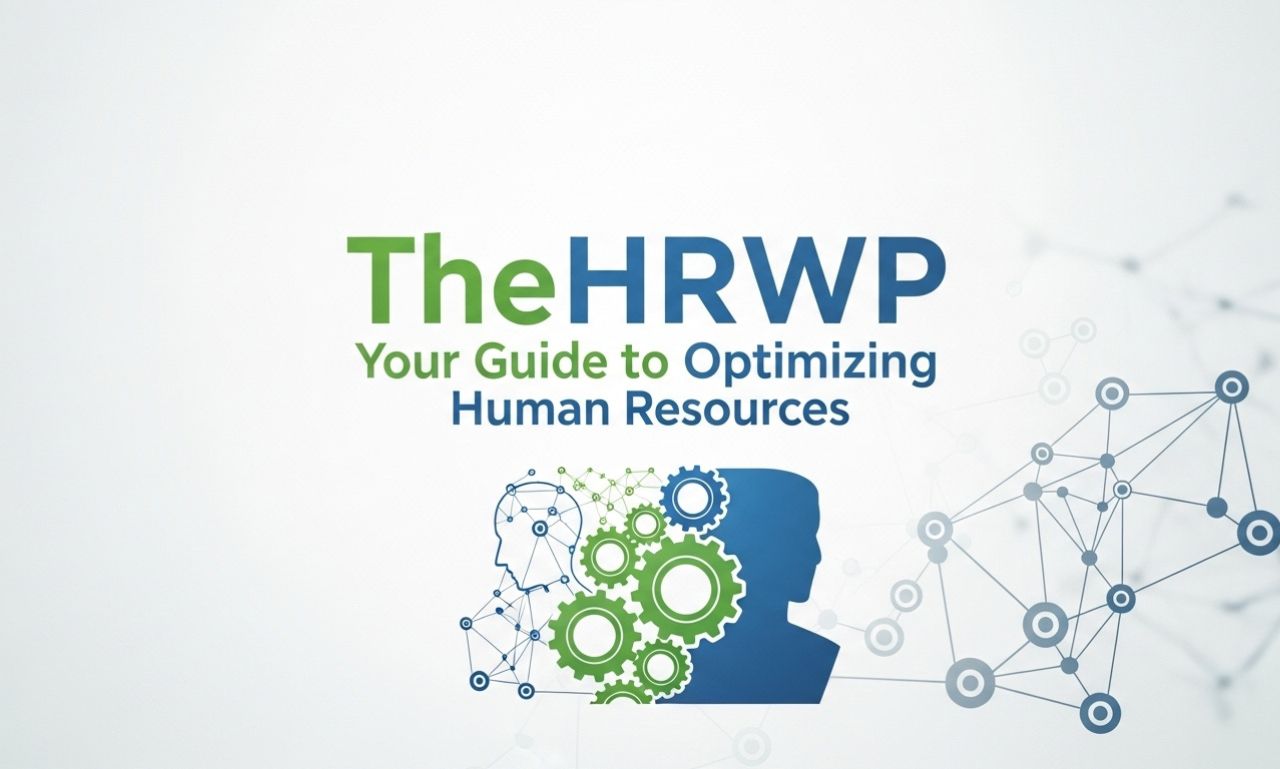
In today’s fast-paced business landscape, human resources (HR) is not just about hiring and firing. It plays a pivotal role in shaping organizational culture, driving employee engagement, and fostering overall productivity. As companies strive for success, optimizing HR practices becomes essential. Enter TheHRWP—a game-changing framework designed to enhance your approach to workforce management.
Have you ever wondered how your organization can harness the full potential of its people? With TheHRWP at your side, you’ll unlock strategies that elevate HR from a simple support function to a strategic partner in achieving business goals. Let’s dive into this transformative concept and explore how it can redefine your understanding of human resources while ensuring your company stays ahead of the competition.
What is TheHRWP?
TheHRWP is a transformative approach to human resource management. It stands for Human Resource Workforce Planning and serves as a strategic tool for aligning workforce needs with organizational goals.
Using data-driven insights, TheHRWP helps businesses anticipate their staffing requirements. This foresight enables organizations to hire the right talent at the right time.
At its core, TheHRWP emphasizes proactive planning rather than reactive hiring. Companies can identify skill gaps and prepare for future challenges by understanding current resources and forecasting future needs.
This methodology not only enhances operational efficiency but also fosters employee engagement. When employees feel valued through proper workforce alignment, productivity naturally increases.
TheHRWP is about creating sustainable growth through effective human resource strategies that benefit both employers and employees alike.
The Evolution of HR: From Personnel to Strategic Partner
Human resources has undergone a significant transformation over the past few decades. It began as a function focused primarily on administrative tasks, like hiring and payroll management. In this early stage, HR was viewed mainly as personnel management.
As organizations evolved, so did the role of HR. The focus shifted from merely managing employees to developing talent and fostering workplace culture. This transition marked the emergence of HR as a strategic partner within businesses.
Today, HR plays an essential role in shaping company strategy. By aligning workforce planning with organizational goals, they contribute to long-term success. Data-driven decision-making now influences how HR identifies skill gaps and anticipates future needs.
The modern HR professional is more than just an administrator; they’re agents of change who drive innovation and enhance employee engagement across all levels of an organization.
Understanding the HRWP (Human Resource Workforce Planning) Process
Understanding the HRWP process is essential for optimizing human resources effectively. It begins with a thorough assessment of current workforce capabilities and organizational goals.
Next, you analyze gaps between existing skills and future needs. This helps determine what roles must be filled to achieve strategic objectives. Engaging stakeholders during this phase ensures alignment across departments.
Forecasting future workforce requirements involves considering factors such as market trends, technological advancements, and potential turnover rates. Accurate predictions are vital for proactive planning.
Once data is gathered, develop strategies to bridge identified gaps. These may include training programs or recruitment initiatives tailored to meet specific demands.
Continuous monitoring and evaluation of your HRWP process allow for adjustments based on changing business landscapes. This dynamic approach keeps your organization agile and prepared for whatever comes next in the ever-evolving world of work.
Step-by-Step Guide to Implementing an Effective HRWP Strategy
To implement an effective HRWP strategy, start by assessing your current workforce. Gather data on skills, performance metrics, and employee demographics. This foundation is crucial for informed decision-making.
Next, define your organization’s goals. Understand where you want to be in the next few years. Align these objectives with workforce capabilities to ensure strategic coherence.
Create a comprehensive plan outlining roles and responsibilities in the HR team. Assign tasks based on strengths and expertise to enhance efficiency.
Engage stakeholders throughout the process. Regular communication fosters collaboration and encourages buy-in from key players across departments.
Monitor progress continuously. Use analytics tools to evaluate outcomes against set benchmarks regularly. Adjust strategies as needed to stay aligned with evolving business needs.
Common Challenges and Solutions in Optimizing Human Resources
Many organizations face challenges when optimizing human resources. One common issue is resistance to change. Employees may feel uncomfortable with new technologies or processes. This can hinder the implementation of effective HRWP strategies.
Another challenge is data overload. With vast amounts of information available, it’s easy to become overwhelmed. Organizations must focus on analyzing key metrics that drive performance rather than getting lost in irrelevant details.
Inadequate training also poses a hurdle. Without proper guidance, employees may struggle to adapt to new systems or understand the HRWP process fully. Investing in regular training sessions can bridge this gap and enhance overall efficiency.
Communication breakdowns often derail initiatives. Ensuring open lines of communication between departments fosters collaboration and aligns goals across the organization, paving the way for successful HR optimization efforts.
Success Stories: Companies that have Implemented HRWP Successfully
Several companies have embraced the HRWP framework, witnessing remarkable transformations. One standout example is XYZ Corp, a tech giant that streamlined its hiring process through workforce planning. By analyzing skills gaps and future needs, they filled positions more efficiently.
Another inspiring case is ABC Industries. They implemented HRWP to align their human resources strategy with business objectives. This approach not only improved employee satisfaction but also increased productivity by 30%.
Then there’s DEF Services, which faced high turnover rates. After adopting HRWP practices, they focused on retention strategies tailored to their workforce’s unique demographics. As a result, turnover decreased significantly.
These successes highlight how strategic workforce planning can drive organizational effectiveness and foster a motivated team environment across various sectors.
The Benefits of Investing in HRWP for Your Organization’s Success
Investing in HRWP can transform your organization. It aligns workforce needs with business goals, ensuring the right talent is in place when needed.
By implementing an effective HRWP strategy, you can anticipate changes in demand and adjust your workforce accordingly. This agility leads to improved productivity and efficiency across departments.
A strong HRWP framework also enhances employee satisfaction. When employees feel their skills are being utilized effectively, job engagement increases significantly. Happy employees contribute more positively to company culture.
Additionally, organizations that prioritize HRWP often see reduced turnover rates. Retaining top talent saves costs associated with hiring and training new staff members.
Strategically managing human resources fosters innovation too. When workers are supported by a well-planned system, they’re empowered to think creatively and drive projects forward without unnecessary obstacles standing in their way.
Conclusion
The landscape of Human Resources is constantly evolving. Embracing the HRWP approach can significantly reshape how organizations manage their workforce. Companies that proactively invest in understanding and implementing effective HRWP strategies not only streamline operations but also cultivate a more engaged and productive workplace.
With the right planning, tools, and insights, any organization can navigate challenges to harness the full potential of its human capital. As we move forward in this dynamic business environment, those who prioritize optimizing their human resources through HRWP will undoubtedly gain a competitive edge. Investing in your workforce today lays the groundwork for success tomorrow—ensuring you’re not just keeping pace but leading the way in your industry.
Technology
Telemetryczny: The Backbone of Modern Data Collection
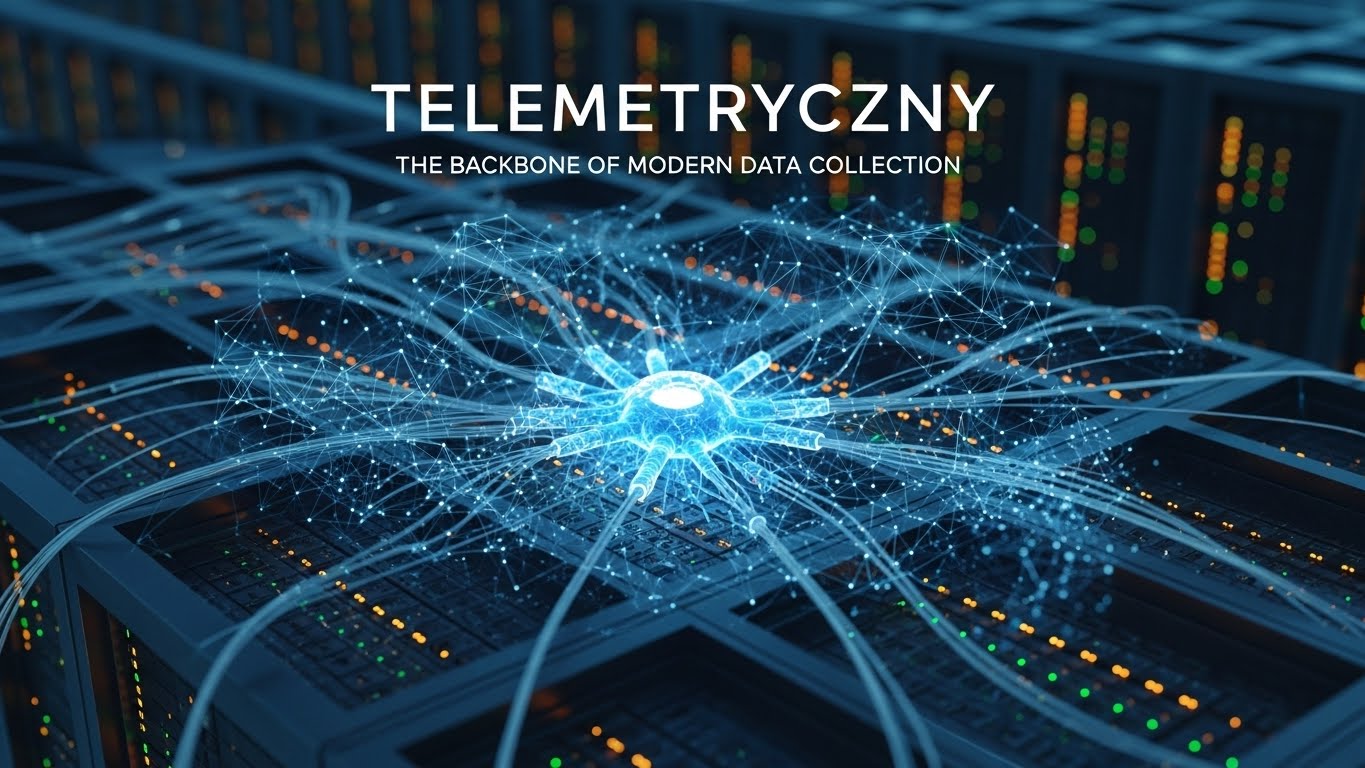
In an age where data reigns supreme, the way we collect and analyze information has transformed drastically. Enter telemetryczny, a game-changer in the realm of data collection that’s reshaping industries across the board. Imagine having real-time insights at your fingertips this is what telemetryczny offers. It seamlessly gathers vital information from various sources, streamlining processes and enhancing decision-making like never before. Whether you’re in healthcare, manufacturing, or even entertainment, understanding telemetryczny can unlock new possibilities for efficiency and innovation. Let’s dive into this fascinating world of modern data collection and explore how it works its magic!
What is Telemetryczny?
Telemetryczny refers to the advanced process of collecting and transmitting data remotely. It leverages various technologies to gather real-time information from different sources, often operating in challenging environments.
At its core, telemetryczny involves sensors that monitor specific metrics, such as temperature, pressure, or location. These sensors relay data back to a centralized system for analysis and decision-making.
The term encompasses a wide range of applications across industries like healthcare, automotive, and telecommunications. Businesses utilize telemetryczny not only to track performance but also to enhance efficiency and optimize operations.
With the rise of IoT (Internet of Things), telemetryczny is evolving rapidly. Its ability to provide actionable insights makes it an indispensable tool for modern enterprises seeking a competitive edge in today’s data-driven world.
How Telemetryczny Works
Telemetryczny operates through a seamless integration of sensors, data transmission technologies, and cloud-based analytics. Sensors collect data from various sources, such as machinery or environmental conditions.
Once collected, this information is transmitted via wired or wireless networks. This ensures real-time monitoring and analysis. The use of protocols like MQTT and HTTP allows for efficient communication between devices.
On the backend, powerful algorithms process the incoming data. These algorithms extract actionable insights by analyzing patterns and anomalies. Visualization tools then present this information in user-friendly dashboards.
This entire system enables organizations to make informed decisions quickly. By leveraging telemetryczny technology, businesses can enhance operational efficiency while reducing downtime significantly.
Benefits of Using Telemetryczny
The benefits of using telemetryczny are both diverse and impactful. First, it enhances data accuracy. By automating the collection process, organizations reduce human error significantly.
Real-time monitoring is another advantage. Businesses gain immediate insights into their operations, allowing for swift decision-making and timely responses to emerging issues.
Cost-efficiency also comes into play. With automated systems in place, companies can save on labor costs while reallocating resources to more strategic initiatives.
Furthermore, telemetryczny supports predictive analytics. By analyzing collected data trends, businesses can anticipate future challenges and opportunities with greater confidence.
Enhanced collaboration emerges as teams access shared data seamlessly across platforms. This connectivity fosters innovation by enabling better communication and informed decisions among team members.
Applications of Telemetryczny in Different Industries
Telemetryczny technology finds its place in various industries, revolutionizing the way data is collected and analyzed.
In healthcare, telemetryczny systems monitor patient vital signs in real-time. This allows for immediate responses to critical changes, enhancing patient care significantly.
The automotive sector employs telemetryczny to track vehicle performance metrics. Manufacturers use this data for improving safety features and optimizing fuel efficiency.
In agriculture, farmers utilize telemetryczny solutions to gather information about soil moisture levels and crop health. This leads to better resource management and increased yields.
Telecommunications companies rely on telemetryczny for network monitoring. It helps identify outages or faults swiftly, ensuring minimal disruption of services.
Meanwhile, the energy industry uses telemetryzny for smart grid management. Real-time data collection aids in balancing supply and demand efficiently while promoting sustainable practices.
Challenges and Solutions in Implementing Telemetryczny
Implementing telemetryczny can present several challenges. One major hurdle is data integration. Many organizations struggle to merge existing systems with new telemetry solutions, leading to fragmented information.
Another concern is security. As data flows from various sources, the risk of unauthorized access increases. Organizations must invest in robust security measures to protect sensitive information.
Scalability also poses a challenge. As businesses grow, their telemetry needs evolve. It’s crucial for companies to choose flexible solutions that adapt as requirements change over time.
Training staff on new technologies can be daunting too. Employees may resist adapting or feel overwhelmed by unfamiliar tools and processes.
To address these issues, comprehensive planning is essential. Engaging stakeholders early in the process fosters buy-in and eases transitions. Regular training sessions can ensure everyone feels confident in using new systems effectively.
The Future of Telemetryczny Technology
The future of telemetryczny technology is poised for remarkable advancements. With the rise of IoT devices, data collection will become more seamless and integrated into everyday life.
Machine learning and artificial intelligence are set to enhance data analysis. This means faster insights from telemetryczny systems, allowing businesses to make informed decisions in real-time.
As 5G networks expand, the transmission of telemetry data will be quicker and more reliable. This connectivity opens up new possibilities for remote monitoring across various industries.
Privacy concerns will also shape the evolution of telemetryczny tools. Developers must prioritize secure data handling practices as they innovate technologies that collect sensitive information.
Sustainability is another key focus area. Future solutions may harness energy-efficient methods to power telemetry systems while reducing their environmental impact. The potential for growth is immense, driving innovation at an unprecedented pace.
Conclusion
The growing importance of telemetryczny in today’s data-driven world cannot be overstated. As industries continue to evolve, the need for precise and real-time data collection becomes even more critical. Telemetryczny stands at the forefront of this transformation, offering a robust solution that enhances decision-making processes across various sectors.
With its ability to gather valuable insights from multiple sources, telemetryczny not only improves efficiency but also fosters innovation. The numerous applications we’ve explored highlight its versatility—from healthcare monitoring systems to smart city infrastructure.
While challenges exist in implementing telemetryczny technology, they are surmountable with strategic planning and investment in training and tools. As we look ahead, advancements in connectivity and data analytics promise even greater enhancements to telemetryzny’s capabilities.
This powerful tool will undoubtedly play a pivotal role as businesses seek ways to harness information effectively and remain competitive. Embracing now positions organizations favorably for future growth while enabling them to respond swiftly to market changes. The journey into advanced data collection is just beginning let’s embrace it together.
Technology
Qiser: The Future of Related Field And Industry
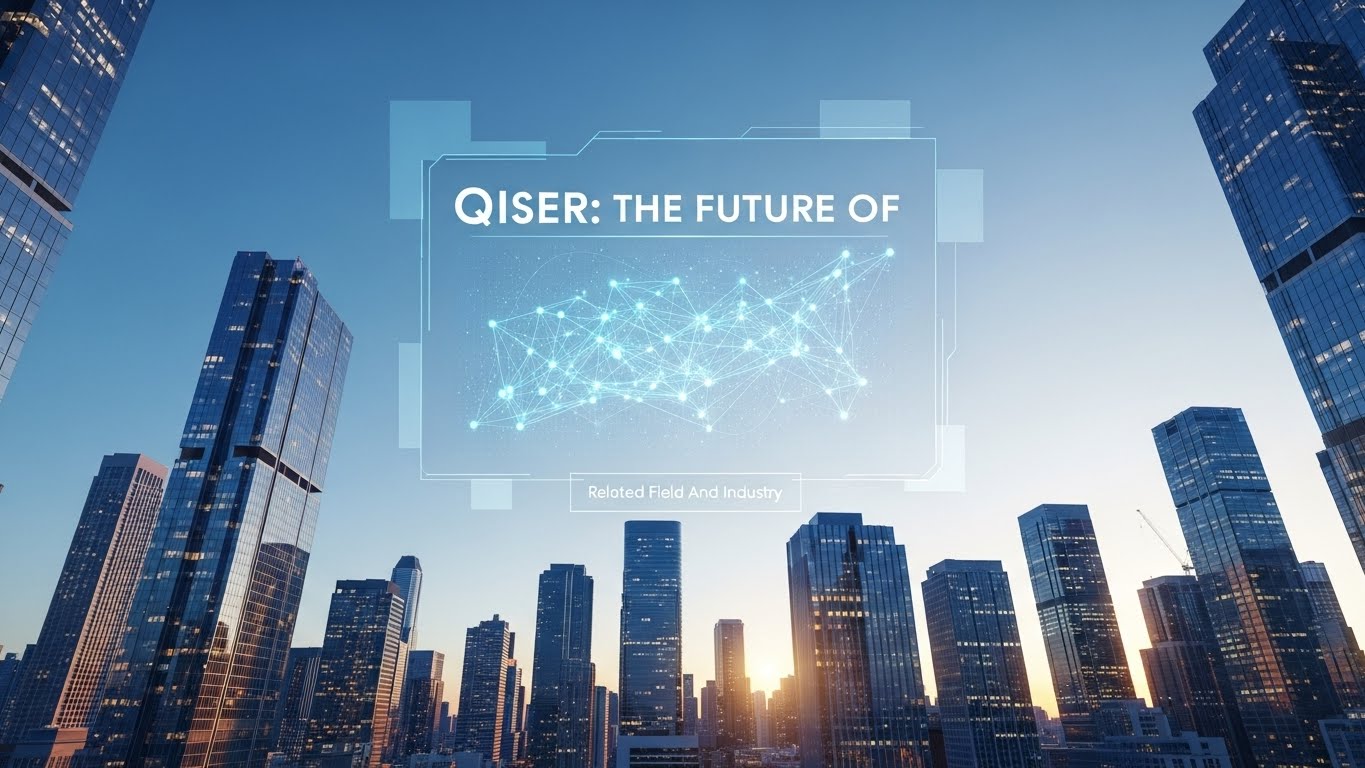
The digital landscape is constantly evolving, and at the forefront of this evolution is an innovative platform called Qiser. As industries seek smarter solutions to enhance productivity and streamline operations, Qiser emerges as a game-changer. Whether you’re in tech, healthcare, or finance, its potential impacts are vast and transformative. Let’s dive into what makes Qiser a revolutionary tool for businesses aiming to thrive in today’s fast-paced environment. From understanding how it works to exploring real-world success stories, you’ll soon see why many believe that Qiser might just hold the key to the future of various industries.
What is Qiser?
Qiser is a cutting-edge platform designed to revolutionize how businesses operate in various sectors. It harnesses the power of artificial intelligence and advanced data analytics to streamline workflows, enhance productivity, and optimize decision-making processes.
At its core, Qiser integrates seamlessly with existing systems. This allows organizations to leverage their current technologies while benefiting from innovative features. Users gain access to real-time insights that help them make informed choices quickly.
The system focuses on user experience, making it accessible for all skill levels. Whether you’re an executive or a front-line employee, Qiser provides tailored tools that adapt to your specific needs.
By prioritizing adaptability and efficiency, Qiser sets itself apart in today’s fast-paced digital landscape. It’s not just another software; it’s a comprehensive solution aimed at driving growth and success across industries.
How Does Qiser Work?
Qiser operates by integrating advanced algorithms and machine learning techniques. These technologies analyze vast datasets to uncover patterns often missed by human insight.
Users interact with Qiser through a user-friendly interface. This design allows individuals to input relevant information effortlessly. The platform processes this data in real-time, generating actionable insights almost instantly.
Behind the scenes, Qiser employs robust cloud computing resources. This ensures high-speed performance while maintaining security and reliability for its users.
Moreover, continuous updates keep Qiser at the forefront of innovation. It adapts based on user feedback and emerging trends in various industries, ensuring that it remains effective over time.
By leveraging automation and intelligence, Qiser streamlines decision-making processes across different sectors. Its capability to provide tailored solutions is what sets it apart from traditional tools available today.
The Benefits of Using Qiser
Qiser offers a transformative approach to how businesses operate. Its user-friendly interface allows for seamless integration into existing systems, making adoption effortless.
Cost efficiency is another major benefit. By streamlining processes, Qiser reduces operational costs and enhances productivity. Businesses can allocate resources more effectively, driving growth without the need for substantial investments.
Enhanced data analytics capabilities provide critical insights that were previously difficult to obtain. Organizations can make informed decisions based on real-time data and trends.
Collaboration becomes smoother with Qiser’s intuitive tools designed for teamwork. Teams can communicate better, share ideas freely, and work toward shared goals efficiently.
Adaptability sets Qiser apart. As industries evolve, so does the platform—ensuring users stay ahead of the competition while meeting changing demands effortlessly.
Industries That Can Benefit from Qiser
Qiser holds transformative potential across various sectors.
In healthcare, it streamlines patient data management and enhances telemedicine services, making care more accessible.
The finance industry can leverage Qiser for efficient transaction monitoring and fraud detection, ensuring security and transparency.
Retail businesses benefit from enhanced customer experiences through personalized shopping recommendations powered by Qiser’s intelligent algorithms.
Manufacturing firms can optimize supply chains with real-time insights into production processes, leading to reduced costs and increased efficiency.
Education is another area where Qiser shines. It facilitates customized learning pathways that adapt to individual student needs.
Even the entertainment sector sees advantages as content delivery becomes quicker and more tailored using Qiser’s innovative frameworks.
With its broad applicability, many industries are poised to innovate significantly thanks to Qiser’s capabilities.
Success Stories of Companies Using Qiser
Several companies have successfully integrated Qiser into their operations, showcasing its transformative potential.
One notable example is a leading logistics firm that streamlined its supply chain processes. By using Qiser’s advanced analytics, they significantly reduced delivery times and improved customer satisfaction rates.
Another success story comes from the retail sector. A major clothing retailer implemented to enhance inventory management. This shift resulted in better stock control and reduced excess inventory costs, ultimately boosting profit margins.
In the tech industry, a software company utilized Qiser for project management. The result was enhanced collaboration among teams and faster product launches.
These examples highlight how diverse sectors are leveraging to achieve tangible results while driving innovation and efficiency within their organizations.
Future Predictions for Qiser
The future of Qiser looks promising as it continues to evolve. Experts predict that its integration with AI will enhance decision-making capabilities across various sectors.
As more industries adopt, we may see significant improvements in operational efficiency. Real-time data processing could revolutionize how companies approach problem-solving.
Moreover, the platform is likely to expand its functionalities. Enhanced features tailored for specific industries can drive greater user engagement and satisfaction.
In addition, increased collaboration between businesses using Qiser could foster innovation. Sharing insights and best practices might lead to unprecedented advancements within their respective fields.
Regulatory frameworks are expected to adapt alongside technological growth. This alignment will ensure that remains compliant while maximizing its potential in a rapidly changing landscape.
Challenges and Limitations of Qiser
While Qiser offers innovative solutions, it’s essential to acknowledge its challenges. Adoption can be slow in industries resistant to change. Traditional practices often hold sway over new technologies.
Integration with existing systems is another hurdle. Companies may struggle with compatibility issues that hinder smooth implementation.
Data privacy and security also raise concerns. As more organizations embrace, the need for robust protection against breaches becomes critical.
Additionally, training staff on this new platform requires time and resources. Without proper guidance, users might find themselves overwhelmed or underutilizing the capabilities of Qiser.
The rapid pace of technological advancement means that what works today may evolve tomorrow. Keeping up with these changes can be a demanding task for many businesses seeking long-term benefits from offerings.
Is Qiser the Future?
Qiser is poised to redefine how we approach problem-solving across various sectors. Its innovative technology adapts seamlessly to different industries, making it a versatile tool for growth.
As more businesses adopt, its influence will continue to expand. Companies are discovering new efficiencies and improved decision-making processes through its capabilities.
The future may also see enhanced integration with emerging technologies like AI and machine learning, elevating potential even further.
While challenges remain, the trajectory suggests that those who embrace Qiser early on could gain significant competitive advantages. The curiosity surrounding this platform reflects a collective eagerness for advancement in business practices.
This shift towards embracing digital solutions signals an exciting era ahead. How organizations choose to leverage will ultimately shape their success in an increasingly complex landscape.
Conclusion
The rapid advancements in technology have paved the way for innovative solutions like Qiser. As businesses strive to stay competitive, adopting tools that enhance efficiency and streamline operations becomes imperative.
Qiser stands at the forefront of this evolution. Its unique capabilities promise to transform industries by integrating seamless processes and fostering collaboration. Companies leveraging can expect improved productivity and a more agile operational framework.
As we look ahead, it’s evident that holds significant potential across various sectors. While challenges exist, its benefits far outweigh the limitations. Organizations willing to embrace this new paradigm will likely find themselves leading their fields.
With many success stories already emerging, it’s clear that early adopters are reaping rewards. The trajectory for Qiser appears bright as it continues to innovate and adapt alongside market needs.
Embracing such technologies is no longer optional; it’s essential for future growth and sustainability in an ever-evolving landscape. As companies navigate these changes, those who invest in solutions like may very well become the industry leaders of tomorrow.
Technology
Twizchat com: The Ultimate Platform for Real Time Conversations
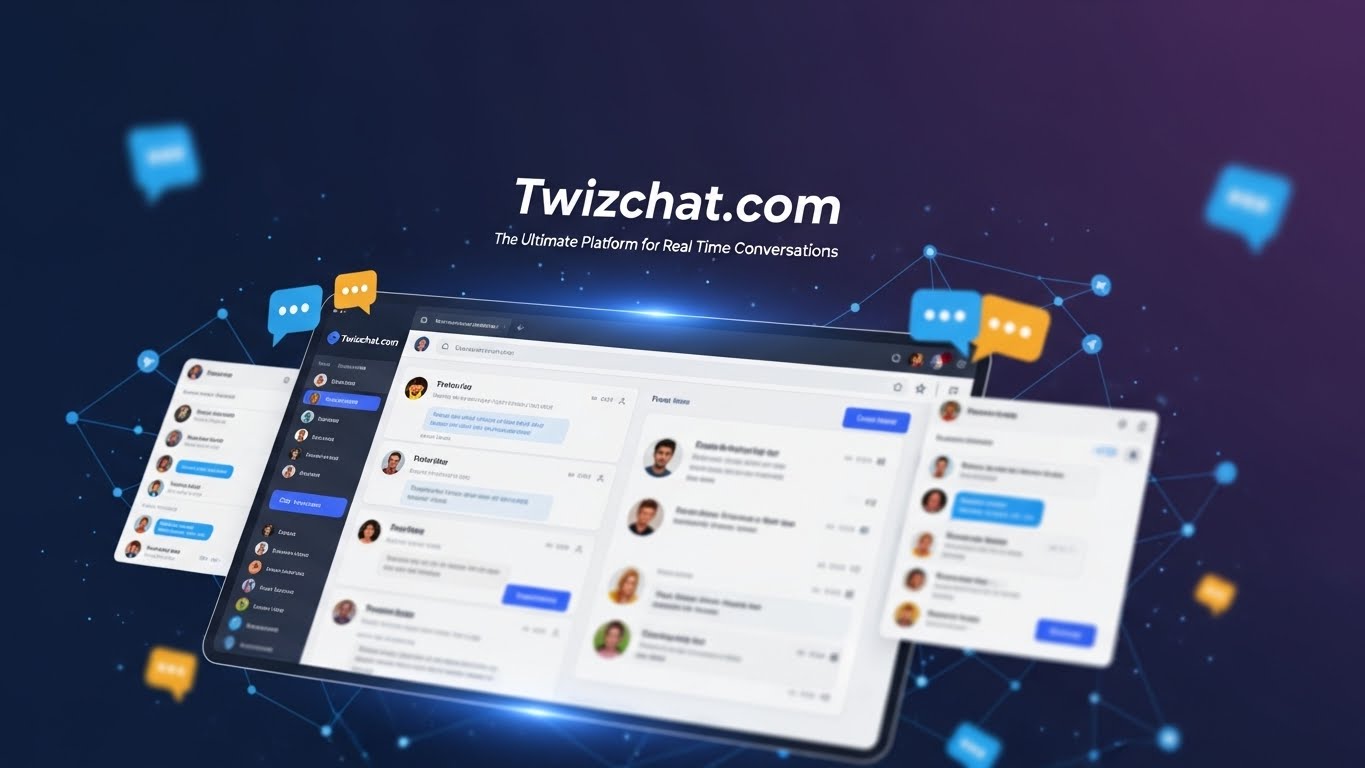
In a world where communication is constantly evolving, staying connected has never been more important. Enter Twizchat com, a platform designed for real-time conversations that bring people closer together. Whether you’re looking to chat with friends, collaborate on projects, or engage with like-minded individuals across the globe, Twizchat offers an innovative space to express ideas and foster connections. Imagine having the ability to have meaningful discussions without delays or distractions—this is what Twizchat aims to provide. Let’s dive into what makes this platform stand out in the crowded landscape of online communication tools.
What is Twizchat com?
Twizchat.com is an innovative platform designed for real-time conversations. It allows users to engage in dynamic discussions without the constraints of traditional messaging apps.
With Twizchat, communication becomes instantaneous and interactive. Users can join or create chat rooms based on various interests or topics, making it easy to connect with like-minded individuals.
The user interface is intuitive and accessible for everyone. Whether you’re a tech enthusiast or just looking to have fun chats, Twizchat caters to diverse audiences.
Additionally, the platform supports multimedia sharing. This means you can send images, videos, and links during your conversations, enriching the interaction experience.
Twizchat.com aims to redefine how we communicate online by fostering connections that are both meaningful and spontaneous.
Features of Twizchat
Twizchat com boasts an array of features that elevate online communication to new heights. Real-time messaging facilitates instant interactions, making it perfect for fast-paced conversations.
Users can create personalized chat rooms to cater to specific topics or groups. This customization fosters targeted discussions and enhances engagement among participants.
The platform also supports multimedia sharing, allowing users to send images, videos, and files seamlessly. This adds depth to conversations and encourages creative exchanges.
Another standout feature is the integration with social media platforms. Users can easily share their chats or invite friends from different networks without hassle.
Security remains a priority as well. End-to-end encryption ensures that messages are private and protected from unauthorized access.
With user-friendly navigation, even newcomers can quickly adapt to the interface without feeling overwhelmed by technical jargon or complicated processes.
How to Use Twizchat
Getting started with Twizchat is a breeze. Begin by visiting twizchat.com and creating an account. You can sign up using your email or connect through social media for quicker access.
Once you’re in, explore the user-friendly interface. Create or join chats effortlessly based on topics that pique your interest. The search functionality helps you find specific conversations quickly.
Engage with others by sending messages, sharing images, or even using GIFs to add flair to your interactions. Don’t forget to adjust notification settings according to your preference for a more tailored experience.
Twizchat also allows private messaging. This feature lets you connect one-on-one without cluttering public chats. Dive into discussions and make meaningful connections as you navigate through various channels created by users worldwide.
Benefits of Using Twizchat
Twizchat offers a seamless experience for users who crave real-time conversations. One of its standout benefits is the ease of connection. Users can engage in discussions without the hassle of long wait times or delays.
Another advantage is its user-friendly interface. Even those less tech-savvy can navigate with confidence, making it accessible to a wider audience.
Privacy and security are also paramount on Twizchat. Users have control over their data, ensuring that conversations remain confidential and secure from prying eyes.
Additionally, Twizchat supports various devices, enabling communication on-the-go. Whether you’re using a smartphone or laptop, staying connected is simple.
The platform fosters community engagement. Groups can collaborate effortlessly, sharing ideas in real time and building relationships across distances.
Real Life Examples of Successful Conversations on Twizchat
Twizchat has become a hub for dynamic discussions across various fields. One notable example is the collaboration between educators sharing innovative teaching strategies. They seamlessly exchanged ideas, showcasing how Twizchat can enhance learning experiences.
In another instance, tech enthusiasts gathered to discuss emerging trends in artificial intelligence. Participants shared insights and resources instantly, fostering connections that might not have happened without this platform.
Businesses also leverage Twizchat for real-time customer feedback sessions. Brands engage directly with their audience, answering questions while collecting valuable data to improve their services.
Even authors utilize Twizchat for interactive book launches. Readers interact with writers live, deepening engagement and excitement around new releases. This format allows authors to gauge reader interest immediately while building a loyal fanbase.
These examples highlight how diverse communities thrive on Twizchat through authentic conversations and meaningful interactions.
Comparison with Other Chat Platforms
When comparing Twizchat com to other chat platforms, a few key differences stand out. Many popular chat services focus on pre-set channels or groups. In contrast, Twizchat offers a more fluid experience for real-time conversations.
Other platforms often feature delayed responses due to their design. Users can find themselves waiting for replies in threaded discussions. With Twizchat, interactions are instantaneous, making the conversation feel alive and engaging.
Privacy settings vary widely among competitors. Some require extensive personal information before allowing access. Twizchat prioritizes user privacy by allowing seamless participation without demanding unnecessary details.
Additionally, while many chat applications cater primarily to text communication, Twizchat embraces multimedia integration effortlessly. Users can share images and videos directly within conversations without interruption.
These distinctions make it clear that Twizchat is designed with modern communication needs in mind, pushing boundaries beyond what traditional platforms offer.
Future Possibilities for Twizchat
The future of Twizchat holds exciting potential. As technology advances, the platform may incorporate features like AI-driven chatbots to enhance user interaction.
Imagine real-time translation capabilities. This could allow users from different linguistic backgrounds to engage seamlessly. Such a feature would break down barriers and expand Twizchat’s appeal globally.
In addition, integrating augmented reality (AR) could redefine how conversations occur. Users might experience virtual meetups or events, making discussions more immersive and engaging.
Moreover, enhanced security protocols will likely be implemented as privacy concerns grow among users. A focus on data protection can build trust and encourage even more people to join the conversation.
With continuous updates based on user feedback, Twizchat can evolve into an indispensable tool for both casual chats and professional networking. The landscape of online communication is changing rapidly, and Twizchat is poised to adapt alongside it.
Conclusion
Twizchat com has emerged as a standout platform for real-time conversations, catering to diverse communication needs. Its unique features and user-friendly interface make it an attractive option for individuals and businesses alike. Users can effortlessly engage in meaningful discussions, whether they are brainstorming ideas or connecting with friends.
The benefits of Twizchat extend beyond just chat functionality; the platform fosters community engagement and collaboration. With numerous successful conversations already taking place on Twizchat, it’s evident that this tool is making waves in how we communicate online.
As technology evolves, so does Twizchat’s potential to innovate further. This could lead to even more exciting features that enhance user experience and redefine what real-time conversations look like.
With its competitive edge over other chat platforms, Twizchat.com positions itself as a valuable resource in today’s fast-paced digital landscape. As users continue to discover its capabilities, the future looks bright for those seeking dynamic ways to connect and converse online.
-

 Health2 weeks ago
Health2 weeks agogel ooru: Incorporate into Your Daily Routine for Radiant Skin
-
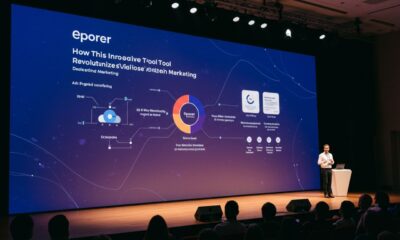
 Digital Marketing2 weeks ago
Digital Marketing2 weeks agoEporer: How This Innovative Tool Revolutionizes Digital Marketing
-

 Technology3 months ago
Technology3 months agointernetchocks: The Impact of Online Communication and Connectivity
-

 Blog2 months ago
Blog2 months agoهنتاوي com: Changing the Online Entertainment Landscape
-

 Technology2 months ago
Technology2 months agoi̇ns: Strategies for Leveraging Information Networks Effectively
-

 Travel3 months ago
Travel3 months agoPertadad: Should Be on Your Travel Bucket List This Year
-

 Celebrity2 months ago
Celebrity2 months agoLiz Shanahan: A Trailblazer in Her Field and a Source of Inspiration
-

 Blog2 months ago
Blog2 months agoKirbi Dedo: Became a Cultural Touchstone for Creative Minds
